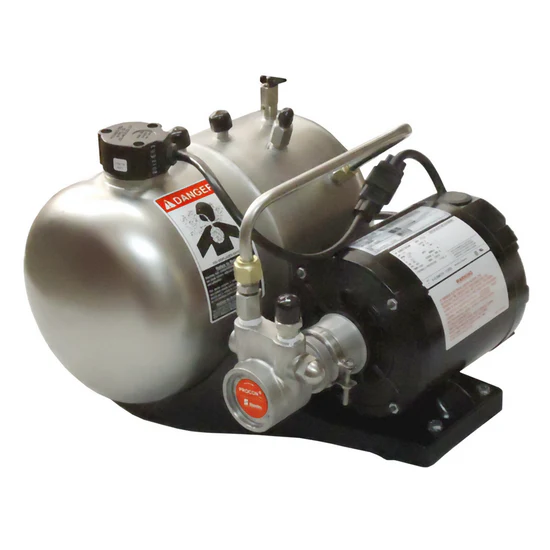A couple years ago I put together a home seltzer/beer system using all stainless steel except for the CO2 regulator. I added a stainless steel double check valve on the CO2 line to try and keep the (acidic) carbonated water vapor from reaching the cheap brass CO2 regulator (which had a Prop 65 warning for lead content on it) and leaching out heavy metals. Initially this worked well, I had the water tested and it lead content came back just above the limited of detection and well below EPA limits for drinking water.
Flash forward a couple years and I got it retested and the lead content in my seltzer has jumped up 8-fold since I built it. I borrowed an XRF and as far as I can tell, literally the only lead in the system is the damn CO2 regulator, which uses 2-3% leaded brass. My theory is that when I change out the CO2 tanks the pressure difference reverses and briefly allows a bit of water through the check valves, which corrodes the brass and leaches out the lead. I've run the tanks empty a few times and left them like that a week or two, so possibly a lot of corrosion has gotten at the brass/lead which is why the lead is going up and up.
At this point I've wasted hundreds of dollars on lead testing and valves to try and salvage $60 regulator when I should have just thrown it in the trash. What are my options for a lead-free Co2 system? I've seen chrome plated brass regulators, but it isn't clear to me if that completely isolates the lead (plus chromium is not great...). I've also seen stainless steel regulators, which seems ideal, but mostly looks like its aimed at industrial/medical applications and no idea what they cost. Are there any good options that aren't thousands of dollars?
Flash forward a couple years and I got it retested and the lead content in my seltzer has jumped up 8-fold since I built it. I borrowed an XRF and as far as I can tell, literally the only lead in the system is the damn CO2 regulator, which uses 2-3% leaded brass. My theory is that when I change out the CO2 tanks the pressure difference reverses and briefly allows a bit of water through the check valves, which corrodes the brass and leaches out the lead. I've run the tanks empty a few times and left them like that a week or two, so possibly a lot of corrosion has gotten at the brass/lead which is why the lead is going up and up.
At this point I've wasted hundreds of dollars on lead testing and valves to try and salvage $60 regulator when I should have just thrown it in the trash. What are my options for a lead-free Co2 system? I've seen chrome plated brass regulators, but it isn't clear to me if that completely isolates the lead (plus chromium is not great...). I've also seen stainless steel regulators, which seems ideal, but mostly looks like its aimed at industrial/medical applications and no idea what they cost. Are there any good options that aren't thousands of dollars?






![Craft A Brew - Safale S-04 Dry Yeast - Fermentis - English Ale Dry Yeast - For English and American Ales and Hard Apple Ciders - Ingredients for Home Brewing - Beer Making Supplies - [1 Pack]](https://m.media-amazon.com/images/I/41fVGNh6JfL._SL500_.jpg)





















































